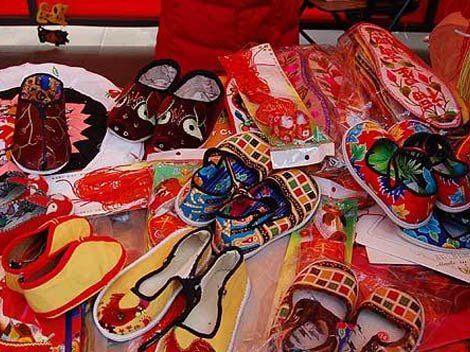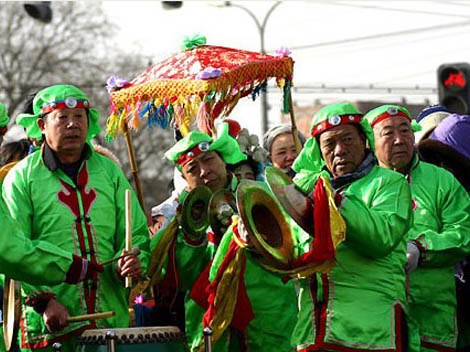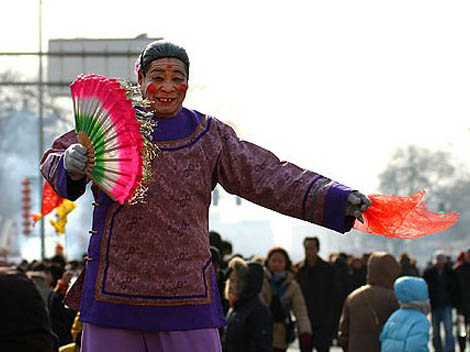The over 400-year-old Changdian temple fair in Xuanwu District of Beijing originated in the Jiajing period of the Ming dynasty, rose in the Kangxi period of the Qing dynasty and thrived in the Qianlong period of the Qing dynasty. In the past, there were eight temple fairs during the Spring Festival, such as in Changdian, Baiyunguan(White Cloud Temple) and Dazhong Si (Great Bell Temple), but Changdian was the most prestigious one and beat the others in scale and length (from the first day to the fifteenth day of the first lunar month). Therefore, Changdian temple fair was recognized as the only official temple fair during the Spring Festival.

Changdian is a place name, but it is not the name of a hutong or a street. It is a narrow alley on the eastern side of South Xinhua Street, Xuanwu District. In history, Changdian temple fair was located between Hepingmen and Liangjiayuan from north to south, and between Nanbeiliu Alley and Yanshousi Street from west to east. Temple fairs are normally named after a temple. There were three temples in the area of Changdian temple fair, namely Huoshen Temple, Lvzu temple and Temple of Earth. Close to each other, these temples all held Buddhist activities during the first lunar month, which attracted thousands of people and vendors. This is how Changdian temple fair started.

In the past, Changdian temple fair had a large scale. Shops and pitchmen at the fair sold paintings and calligraphic works, antiques, albums of paintings or calligraphy, folding fans, snacks of Beijing flavor, dried and fresh specialties, diabolos and peg-tops, windmills and kites, odds and ends needed for sewing, and miscellaneous goods. These could meet people's dining, wining, merry-making and shopping needs. Naturally the fair became a place appealing to both refined and popular tastes and suitable for both the old and the young. Instead of being held on open ground as before, it is now a pedestrian shopping street. Activities at the fair include traditional Beijing flower fair, exhibition of old photos on folk customs of Old Beijing, exhibition of traditional shop signs, performance of Tianqiao folk arts and traditional Peking Opera plays, and discounted book fair, etc, which display a great varieties of forms and extraordinary splendor. The time-honored shops on Liulichang Culture Street, of course, are unwilling to remain out of the limelight. The wood-block printing of Rongbaozhai, the cultural relic duplication of Jiguge, the writing brush production technique of Lifushou, and the ancient book restoration skill of Cathay Bookshop are real eye-openers. Moreover, traditional wedding ceremony of Old Beijing, like sitting in a bridal sedan-chair, jumping over the fire pan, and revealing the bride’s veil, also enter the fair.

Changdian temple fair is the best place to go to learn about northern folk customs represented by Beijing.





